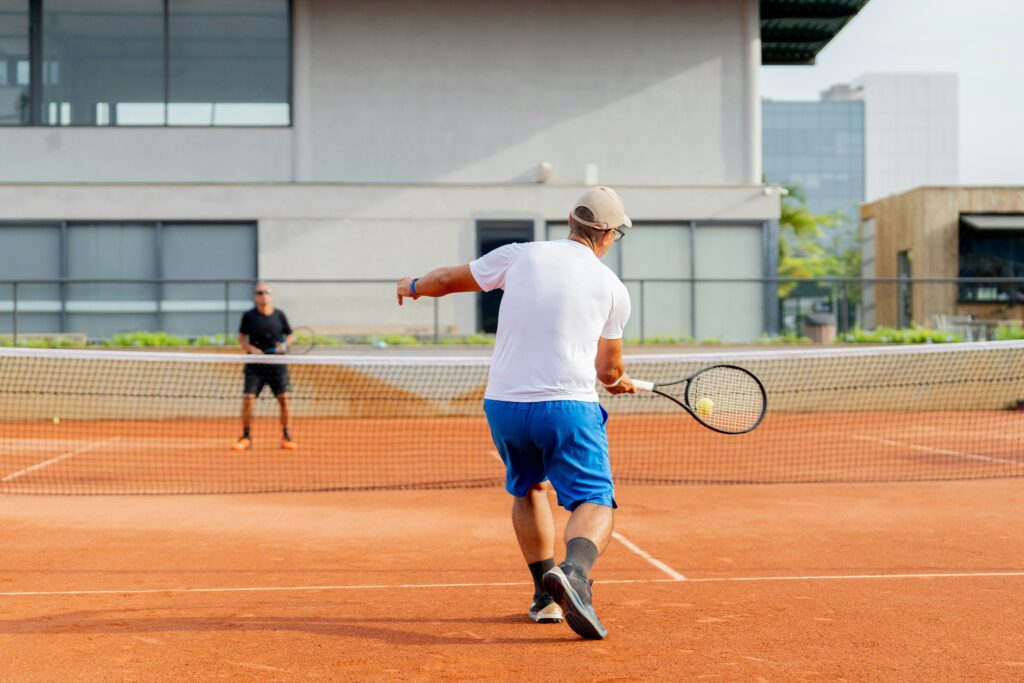Tennis: The Ultimate Game of Precision, Power, and Perseverance


Tennis is one of the few sports that truly blend artistry with athleticism. Whether played on grass, clay, or hard court, the game requires a sharp mind, a strong body, and unshakable focus. The sound of the ball striking the racket, the intensity of rallies, and the elegance of each serve combine to create a thrilling spectacle that never loses its charm.
What makes tennis remarkable is its universal appeal. From weekend players at local courts to global superstars like Serena Williams and Novak Djokovic, tennis bridges generations and cultures. It teaches fairness, discipline, and respect while delivering high-octane competition. That’s why it continues to capture hearts around the world.
The Strategic Side of Tennis
Tennis is often compared to a chess match played at high speed. Every shot demands calculation—where to aim, how much spin to add, and when to attack or defend. Players constantly analyze their opponents’ patterns, adapting strategies on the fly. One wrong move can shift momentum instantly.
A strong strategy goes beyond hitting winners. It involves mental endurance, reading the opponent’s body language, and predicting their next move. Each point becomes a puzzle; success depends on quick thinking and execution. This strategic depth transforms tennis from a simple sport into an intellectual battle of wits and timing.
Mastering Skill and Technique
Behind every powerful forehand or precise volley lies years of disciplined practice. Tennis players must develop accuracy, control, and rhythm through repetition and coaching. Mastery doesn’t come overnight—it requires endless drills and adapting to different conditions and opponents.
Furthermore, tennis technique extends beyond swinging a racket. It involves footwork, balance, and anticipation. Players learn to move fluidly, staying light on their feet while generating power from their core. The synchronization of body and mind is what turns skilled players into champions.
The Physical Demands of Tennis
Tennis may look elegant, but it’s one of the most physically demanding sports in the world. Matches often last for hours, testing stamina, agility, and endurance. A single point can involve bursts of sprinting, sudden stops, and lightning-fast reactions. Players need exceptional fitness to maintain consistency through long rallies and intense sets.
In addition to strength and speed, flexibility and recovery are essential. Professional athletes follow strict training routines to stay in top condition. They blend cardio, resistance workouts, and mobility exercises to enhance performance and prevent injury. That’s why tennis develops a full-body athleticism unmatched by many other sports.
The Mental Strength Behind the Game
Beyond physical skill, tennis demands an extraordinary level of mental resilience. Players often compete alone, relying solely on their mindset to handle pressure. Maintaining composure after losing a point—or even a set—can determine the outcome of a match.
Tennis tests emotional control and confidence. Champions stay focused even when fatigue sets in or the crowd turns noisy. They learn to visualize success, manage frustration, and trust their preparation. This mental training translates into real life, teaching patience, perseverance, and self-belief lessons.
The Role of Stamina and Endurance
Endurance separates great tennis players from good ones. Long matches can push athletes to their limits, both physically and mentally. Maintaining precision under fatigue requires a perfect blend of conditioning and willpower. Stamina isn’t built overnight—it results from consistent training and experience in tough matches.
Endurance also defines how players recover between games and tournaments. The world’s best maintain strict diets, hydration routines, and rest schedules to sustain energy levels. In many ways, stamina keeps the game alive—fueling every serve, rally, and comeback.
The Power of Competition and Sportsmanship
While tennis is fiercely competitive, it’s also built on respect and integrity. Players shake hands before and after every match, acknowledging the shared effort and spirit of the sport. This tradition of sportsmanship sets it apart, showing that even in rivalry, there’s mutual admiration.
Competition in tennis pushes players to become their best selves. Each match offers a new opportunity to learn, improve, and evolve. The pressure of high-stakes tournaments shapes champions who inspire fans worldwide. Through competition, tennis promotes humility, grace, and determination.
Tennis as a Lifestyle and Community
For millions, tennis isn’t just a sport—it’s a lifestyle. Local clubs, community courts, and global tournaments create a sense of belonging. Players form friendships, mentors guide newcomers, and fans gather to share their passion. The sport’s culture encourages connection, fitness, and joy across all ages.
Moreover, tennis promotes lifelong health. It improves cardiovascular strength, coordination, and mental clarity. Studies show that regular players live longer, healthier lives thanks to the mix of physical and psychological exercise the game provides. In essence, it becomes both a game and a way of life.
The Future of Tennis
As technology advances, tennis continues to evolve. Innovations like electronic line calls, advanced racket materials, and performance analytics enhance fairness and excitement. Social media also brings fans closer to their favorite players, expanding the game’s global reach.
Young athletes from new regions are entering the spotlight, making tennis more diverse and inclusive than ever. With grassroots programs and international academies, the next generation of stars is already rising. The sport’s future shines bright—built on precision, power, and perseverance.
Why Tennis Remains the Ultimate Game
Tennis captures everything a sport should represent—skill, strength, strategy, and heart. Every match tells a story of persistence, discipline, and creativity. The balance between physical action and mental calculation makes it endlessly fascinating to watch and play.
As the game continues to grow, its lessons remain timeless. Tennis teaches players to handle challenges, think strategically, and stay resilient through setbacks. It’s not just about winning—it’s about mastering oneself. That’s why tennis will always be the ultimate blend of strategy, skill, and stamina.
